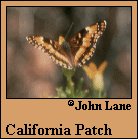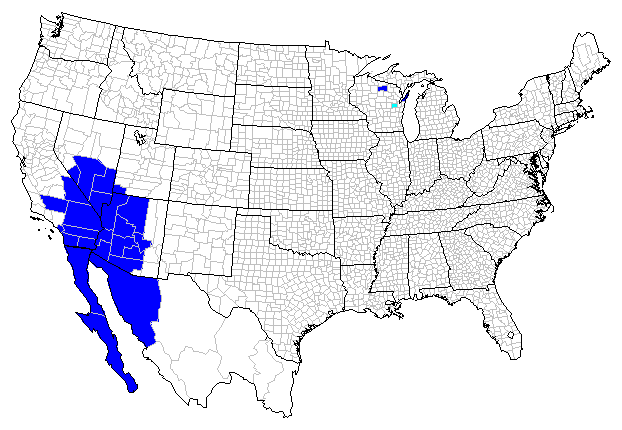 |
 

 |



California Patch (Chlosyne californica [W. G. Wright])
Wing span: 1 1/4 - 2 inches (3.2 - 5.1 cm).
Identification: Upperside is black with a wide orange median band and large orange submarginal spots. Underside of hindwing has a red spot near the abdomen which blends into the median band.
Life history: Males perch in the morning on hilltops to watch for females. Eggs are laid in groups on the underside of host plant leaves; caterpillars eat leaves. Hibernation is by third-stage caterpillars.
Flight: Many broods from March-November.
Caterpillar hosts: Desert sunflower (Viguiera deltoidea var. parishii) in the sunflower family (Asteraceae).
Adult food: Flower nectar.
Habitat: Desert washes and canyons.
Range: Southern Nevada south to southwestern Arizona, southeastern California; Baja California and Sonora, Mexico.
Conservation: Not thought to be necessary.
The Nature Conservancy Global Rank: G5 - Demonstrably secure globally, though it may be quite rare in parts of its range, especially at the periphery.
Management needs: None reported.
References:
Scott, J. A. 1986. The butterflies of North America. Stanford University Press,
Stanford, Calif. 583 pages, 64 color plates.
Tilden, J. W. 1986. A field guide to western butterflies. Houghton-Mifflin Co.,
Boston, Mass. 370 pages, 23 color plates.
Author: Jane M. Struttmann

